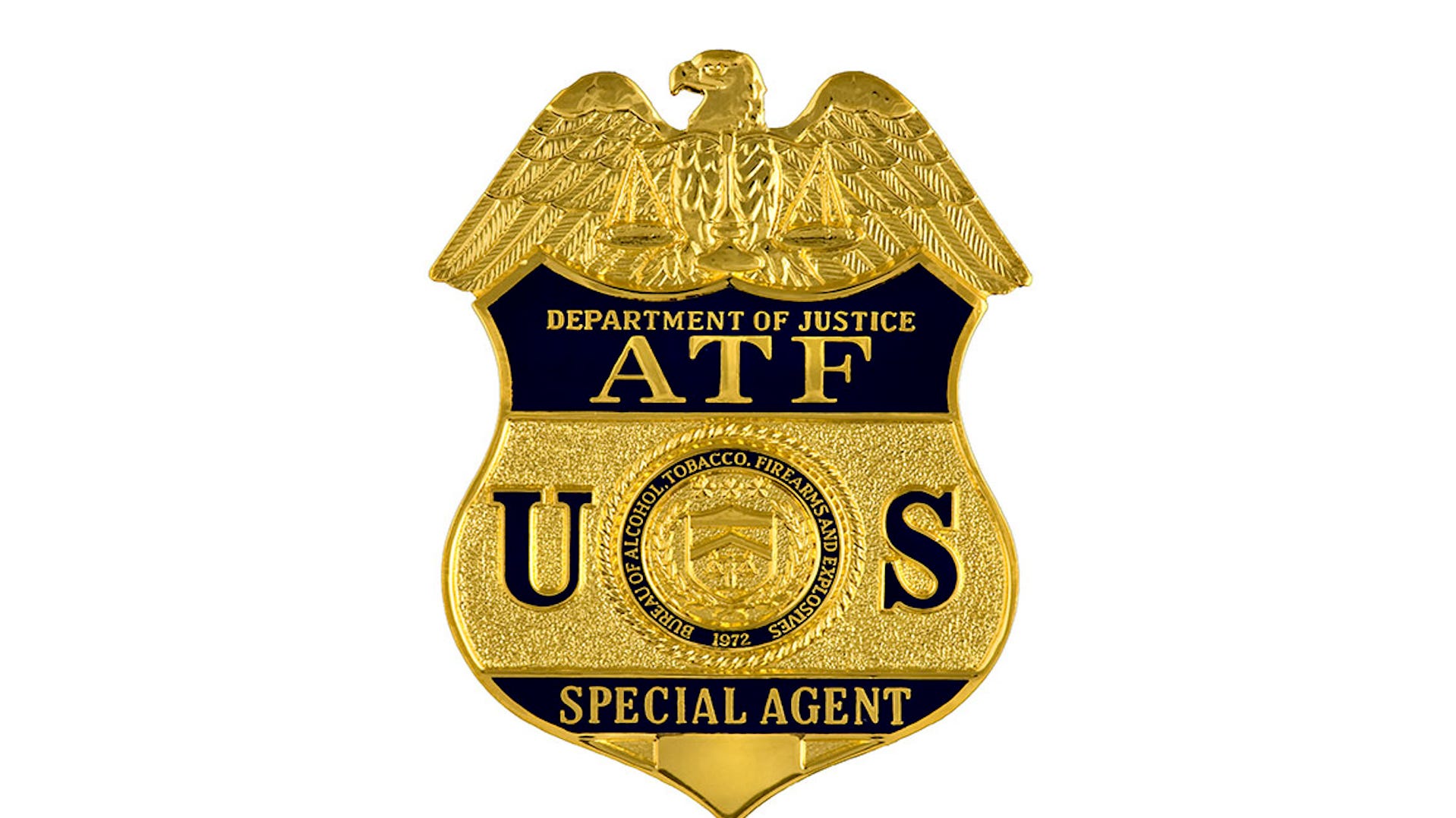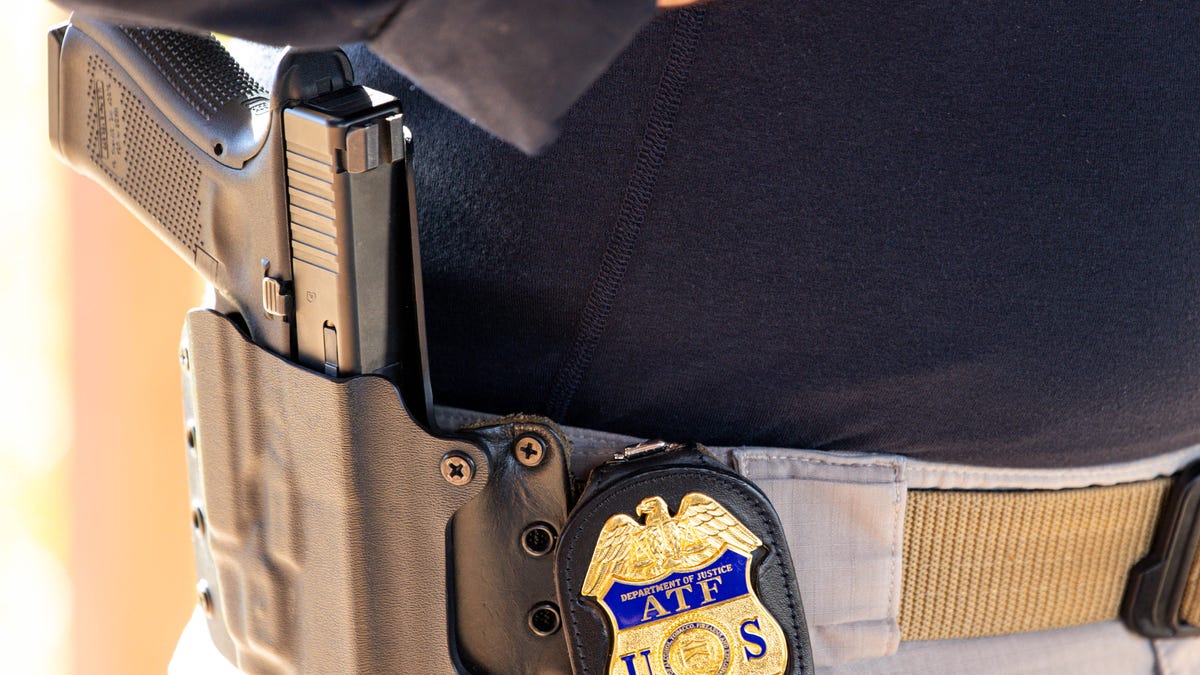
In a blurred cellphone video that would later go viral, federal officers knock on a Florida gun owner’s door, demanding he turn over an illegal device that they claim he bought as a silencer for his AR-15 rifle.
The man, Nick Vitiello, pushes back.
“Your entire job is to take away peoples’ guns… and erode the Second Amendment,” Vitiello told the Bureau of Alcohol, Tobacco, Firearms and Explosives agents on his doorstep. He throws out ATF failures like swear words: Waco, Ruby Ridge, shooting dogs.
“You’ve been watching too many shows and reading too many books,” the agents respond. “I’m sure we’ll find you again someday.”
The standoff last year and its popularity online exemplify rising tensions over the agency’s years-long struggle to keep up with do-it-yourselfers who find ways to skirt federal restrictions.
Late last month, the ATF tried to remove any confusion about devices marketed as “solvent traps” to catch excess cleaning fluids. Most actually are silencers, which are regulated by the National Firearm Act of 1934 – and banned completely in many states.
It’s one of a string of controversial decisions related to add-on devices for firearms. In 2020, after the mass shooting at a Las Vegas country music festival, the agency banned bump stock devices. It has cracked down on stabilizing braces, forced-reset triggers and so-called “Glock switches” that can make a semi-automatic handgun capable of automatic fire.
For dedicated gun enthusiasts and the gun lobby, the moves all fall under the same category: It’s no conspiracy theory, they’re coming for our guns.
The recent warning to all federal firearms licensees makes clear that the test of what’s legal isn’t what a device is called, but how it can be used. Solvent traps, it said, are classified under the statutes that include “any device for silencing, muffling or diminishing the report of a portable firearm.”
ATF spokeswoman Kristina Mastropasqua said solvent trap devices that function as silencers must be registered by the manufacturer or importer, not the individual buyer. In recent years, hobbyists with machining skills have circumvented long wait-times for registration of traditional silencer purchases under the National Firearm Act’s “Form 4” by registering their homemade devices under a different process, known as a “Form 1.”
Solvent traps no longer qualify for Form 1 registration, a move that gun enthusiasts, attorneys advising them and manufacturers find troubling.
“ATF’s latest open letter highlights the issue with how Congress defined the term ‘silencer’ to include its parts, ATF’s interpretation of what constitutes a silencer, and an individual’s ability to manufacture or repair their own,” said Adam Kraut, executive director of the Second Amendment Foundation.
“Individuals who wish to manufacture their own silencers are placed in a precarious position of trying to source materials to do so while not running afoul of the law,” Kraut said, “ which requires a verbose registration scheme and wait times that run many months before assembly can occur.”
Vitiello told USA TODAY that he had received a Form 1 for manufacturing his own silencer and went through the process of getting fingerprinted, filling out paperwork and paying a $200 tax – a process he says was legal in 2021 but the ATF now deems illegal. He has not been charged with any crimes.
He called the new open letter from ATF “absurd” since he claims solvent traps require substantial machining to be converted to a functioning silencer.
“The ATF is increasingly overstepping its congressionally approved authority and illegally creating laws while calling them ‘rules’,” Vitiello said.
Silencers are mufflers for guns
Silencers have been regulated since the 1930s – alongside machine guns – to slow down mobster violence.
Nationwide, Americans purchased and paid the $200 fee to register more than 2.6 million silencers, according to the ATF. They’re legal in 42 states but restricted in: California, Delaware, Hawaii, Illinois, Massachusetts, New Jersey, New York, Rhode Island and Washington, D.C.
The Trump administration and a GOP bill in Congress sought to legalize silencers nationwide, an effort that failed in 2017. An NRA-backed campaign sought to rebrand the devices “suppressors,” since they reduce noise but are not silent.
In 2019, the U.S. Supreme Court rebuffed an effort by two men convicted of purchasing unregistered silencers to loosen the rules on the devices.
Proponents of the devices say they help protect hearing and reduce recoil and muzzle rise, leading to more accurate shooting.
Gun control activists fear silencers make gunshots harder to hear or see, diminishing the effectiveness of law enforcement and community gunshot detection systems, such as ShotSpotter.
While rare, crimes have been committed with silencers. A former Los Angeles Police Department officer armed with a Glock pistol and AR-15, both affixed with silencers, shot and killed four people in February 2013. In 2019, a man used an H&K .45 pistol affixed with a silencer to kill 12 people in Virginia Beach.
Homemade silencers can still be manufactured and registered, but only by following strict protocols, said Dillon Harris, an attorney at the Civil Rights Defense firm.
Harris called the ATF letter welcome clarification albeit “a day late and a dollar short” since new hobbyists will continue to encounter the solvent traps in online marketplaces.
Solvent trap issue stirs controversy, conspiracy theories
The ATF raided the manufacturing building and shut down the website of a Michigan company, Diversified Machine, in 2022. Three men ultimately pleaded guilty to conspiring to make and sell $1 million in silencer kits and components without a license under the guise of “solvent traps.”
In the wake of the seizure, ATF obtained the names and addresses of thousands of Diversified Machine’s customers. Agents then sent warning letters in 2022 and showed up on doorsteps to ask people to voluntarily turn over the illegal devices to anyone the agency believed had purchased them.
That action touched off a wave of new criticism of an agency already reviled by many in the gun rights community.
Vitiello says he doesn’t regret sharing the video of his August 2022 confrontation, but in retrospect he said he could have just invoked the Fourth and Fifth Amendments and asked them to leave immediately.
“I’m here about a solvent trap that you ordered,” the agent says at one point. “Do you still have it?”
He goes on to explain that they are “here to pick it up and have it destroyed” and informs Vitiello that if he doesn’t comply, he can be prosecuted for having an illegal device.
Vitiello tells them to come back with a warrant.
“I feel as though I exercised my rights appropriately, although after one of the agents commanded me to remove my hands from my pocket, I admit I quickly became agitated,” Vitiello told USA TODAY. “Having two federal agents accusing you of committing a felony is extremely stressful.”
Harris, the firearms attorney, said the clash depicted in the video is not ideal. He counsels clients approached by the ATF not to answer the door in the first place – but if they do, not to make any statements without first speaking with an attorney.
“The last thing we want is any escalation because those don’t result in good outcomes,” Harris said. “Generally, agents and law enforcement are respectful, but you shouldn’t be speaking without consulting your attorney.”
Nick Penzenstadler is a reporter on the USA TODAY investigations team. Contact him at npenz@usatoday.com or @npenzenstadler, or on Signal at (720) 507-5273.

